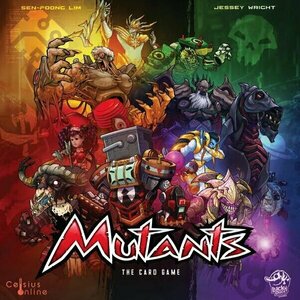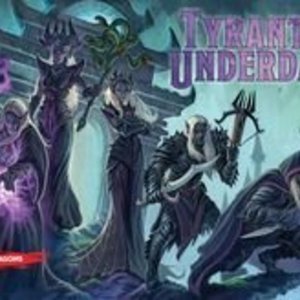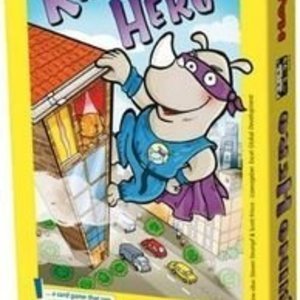Search
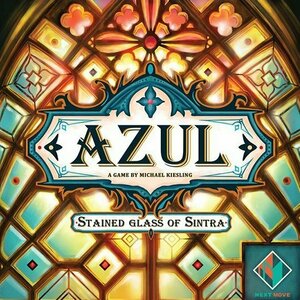
Azul: Stained Glass of Sintra
Tabletop Game
Created by Michael Kiesling, Azul: Stained Glass of Sintra challenges players to carefully select...
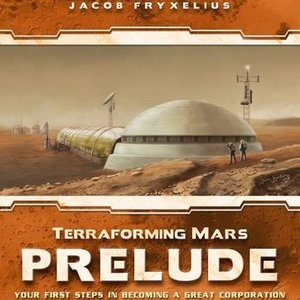
Terraforming Mars: Prelude
Tabletop Game
As the mega corporations are getting ready to start the terraforming process, you now have the...
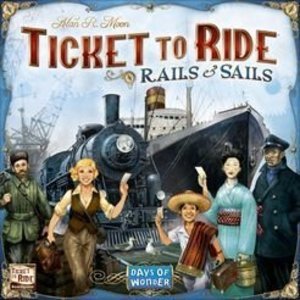
Ticket to Ride: Rails & Sails
Tabletop Game
Ticket to Ride: Rails & Sails is a standalone game with a double-sided board, the largest used in...
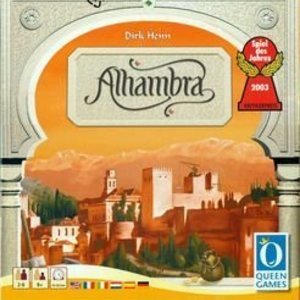
Alhambra
Tabletop Game
Granada, 1278. At the foot of the Sierra Nevada mountains, one of the most exciting and interesting...
Boardgames ModernClassics TonsofExpansions
Purple Phoenix Games (2266 KP) rated Tumble Town in Tabletop Games
Mar 5, 2020
Fun fact about me: I used to live in Le Claire, Iowa (birthplace of “Buffalo Bill” Cody) on a street named Wild West Drive. While the town named many of their streets after American West figures and items, it was not your typical Iowa ghost town – if there are such things. That said, I do have an affinity for the Wild West in my gaming preferences, so when I heard about a dice/building game with an American West theme designed by Kevin Russ (who also recently designed Calico) I was immediately interested. But how does this one… stack up?
Tumble Town is dice rolling, structure building, drafting game with variable player powers. You are charged with choosing building plans to be added to Main Street of Tumble Town. You do this throughout the game by selecting the plans that will make best use of the resources (dice) you gain. The buildings that you construct may allow you special powers to be used on future turns, or one-time bonuses to be used once built. The player who can turn the greatest profit (in terms of VP) at the end of the game will be the winner!
DISCLAIMER: We were provided a prototype copy of this game for the purposes of this review. These are preview copy components, and the final components will definitely be different from these shown. Also, it is not my intention to detail every rule in the game, as there are just too many. You are invited to back the game through the Kickstarter campaign, from your FLGS, or through any other retailers stocking it after fulfillment. -T
To setup, deal each player a packet of starting components: a unique Horse card, two reference cards, Storehouse card, Main Street card, and two brown (they are red in the prototype) dice to be rolled and placed within the Storehouse. Shuffle and display the 1-, 2-, and 3-cactus building cards per the rulebook instructions to form the market. Set aside a number of each die type per the rulebook (both the building cards and dice are determined by number of players). Determine the first player and give them the first player token (a colorful rubber potted cactus). Players will connect their two Main Street cards at the central icon to create a two-card street (we chose the wagon wheel – Easy) and the game can begin!
Turns in Tumble Town consist of four mini-phases that flow into each other rather naturally. The first phase will have the players choosing a revealed building plan card from the offer market. The face-down draw stack will inform the active player as to how many and which type of dice they must draw and roll. Once they have these dice in their Storehouse, the player may now build plans using the dice they control. Buildings can be constructed and placed right onto Main Street, or be placed on the plan card to be placed on Main Street on a later turn. If the player has collected more dice than their Storehouse can hold, they must discard any of the dice they wish. This concludes a turn and the next player can begin their turn.
Certain iconography on the building plan cards allow players to use special powers throughout the game once built, and there are three types. Cards with the silvery bottom panel of symbols and the 1x notation are powers that must be used only once and only when the building is constructed. These powers could be collecting a die of the player’s choice, or receiving various dice counters. The building plan cards that feature a circular arrow notation are powers that can be used once per turn, every turn, if wished. These powers are found on each player’s Horse as well and can be adjusting a die’s face value, or re-rolling two dice, as examples. The third type of power is from the golden paneled cards that have an arrow pointing to a vertical line. These powers are only activated at the end of the game and mostly include scoring variances, like 1VP for each building a player has constructed that has a vulture icon (or a windmill, for example) featured on the card art.
Once a building is erected, the player may choose to place it onto their Main Street cards. When they place them, the player will need to choose where on Main Street these buildings should live. Like Bob Ross always says, “There are no mistakes, just happy accidents.” A player can place their buildings anywhere they wish on Main Street, but the Main Street cards will give extra bonuses to those players who plan ahead and place their buildings strategically. Some plots will ask for a building of a specific height (one die high or three dice high). Some will ask for the base level of the structure to be made of a specific material/die color (brown wood, black coal, silver metal, and gold… gold). Extra points are awarded if one-die-width alleyways are allotted, and these Main Street placements can score a bunch of endgame points.
Turns can be very quick or very deliberate, depending on the types of players involved. AP-prone players will take longer on their turns as they internalize all possibilities of their rolled results, while people like me just fly by the seats of our breeches. The game continues in this fashion: four mini-phases of drafting cards from the market, grabbing the associated dice, rolling them, and attempting to erect the best buildings on Main Street until two dice pools contain two or fewer dice. The current turn order finishes and the game is over.
Components. Again, this is a prototype copy of the game, and the publisher was decent enough to include a listing of items to be improved in the final version (like the red dice being poured brown in final – that really messed up someone’s strategy during a play-through for us because they kept forgetting that red is actually brown). The overall art style is very simplistic and I do NOT mean that negatively. The graphics and artwork are great, and give exactly what is needed without being so distracting that you cannot concentrate on your strategy. The dice are normal dice quality (that always seem to roll poorly when I’m rolling… hmm…). Once you see the photos of how the game will look during production, you will appreciate how great this is going to look on the table. No problems with components at all, save for the red vs. brown debacle that happened on our table. I really hope they keep the awwwwesome rubber cactus first player marker because it’s amazing.
I absolutely loved this one. I have always enjoyed using items for purposes other than originally intended – in this case, using dice as building materials. Of course, playing any game with dice introduces a bit of luck and instability in strategy, but Tumble Town offers quite a bit of manipulation of dice rolls that keeps almost all dice results feasible and useful. I really enjoyed the stacking, the quick turns, and the desperation when someone takes the last wood die when I was gunning for a wood-based building on my next turn. This game is light, but is chocked full of difficult decisions and luck of the roll. Tumble Town is for people who enjoy the rolling and stacking from FUSE (minus the frenzy), and the spatial building placement chaining of Villages of Valeria.
If this is the game for you, then we highly encourage you to check out the Kickstarter campaign which is running until Thursday, March 26. Tumble Town has already exceeding the funding goal at time of this review, but all future pledges will contribute to stretch goals that will improve components and add other components (spoiler?). So get out there and build up Tumble Town, ya yella-bellied greenhorns!
Tumble Town is dice rolling, structure building, drafting game with variable player powers. You are charged with choosing building plans to be added to Main Street of Tumble Town. You do this throughout the game by selecting the plans that will make best use of the resources (dice) you gain. The buildings that you construct may allow you special powers to be used on future turns, or one-time bonuses to be used once built. The player who can turn the greatest profit (in terms of VP) at the end of the game will be the winner!
DISCLAIMER: We were provided a prototype copy of this game for the purposes of this review. These are preview copy components, and the final components will definitely be different from these shown. Also, it is not my intention to detail every rule in the game, as there are just too many. You are invited to back the game through the Kickstarter campaign, from your FLGS, or through any other retailers stocking it after fulfillment. -T
To setup, deal each player a packet of starting components: a unique Horse card, two reference cards, Storehouse card, Main Street card, and two brown (they are red in the prototype) dice to be rolled and placed within the Storehouse. Shuffle and display the 1-, 2-, and 3-cactus building cards per the rulebook instructions to form the market. Set aside a number of each die type per the rulebook (both the building cards and dice are determined by number of players). Determine the first player and give them the first player token (a colorful rubber potted cactus). Players will connect their two Main Street cards at the central icon to create a two-card street (we chose the wagon wheel – Easy) and the game can begin!
Turns in Tumble Town consist of four mini-phases that flow into each other rather naturally. The first phase will have the players choosing a revealed building plan card from the offer market. The face-down draw stack will inform the active player as to how many and which type of dice they must draw and roll. Once they have these dice in their Storehouse, the player may now build plans using the dice they control. Buildings can be constructed and placed right onto Main Street, or be placed on the plan card to be placed on Main Street on a later turn. If the player has collected more dice than their Storehouse can hold, they must discard any of the dice they wish. This concludes a turn and the next player can begin their turn.
Certain iconography on the building plan cards allow players to use special powers throughout the game once built, and there are three types. Cards with the silvery bottom panel of symbols and the 1x notation are powers that must be used only once and only when the building is constructed. These powers could be collecting a die of the player’s choice, or receiving various dice counters. The building plan cards that feature a circular arrow notation are powers that can be used once per turn, every turn, if wished. These powers are found on each player’s Horse as well and can be adjusting a die’s face value, or re-rolling two dice, as examples. The third type of power is from the golden paneled cards that have an arrow pointing to a vertical line. These powers are only activated at the end of the game and mostly include scoring variances, like 1VP for each building a player has constructed that has a vulture icon (or a windmill, for example) featured on the card art.
Once a building is erected, the player may choose to place it onto their Main Street cards. When they place them, the player will need to choose where on Main Street these buildings should live. Like Bob Ross always says, “There are no mistakes, just happy accidents.” A player can place their buildings anywhere they wish on Main Street, but the Main Street cards will give extra bonuses to those players who plan ahead and place their buildings strategically. Some plots will ask for a building of a specific height (one die high or three dice high). Some will ask for the base level of the structure to be made of a specific material/die color (brown wood, black coal, silver metal, and gold… gold). Extra points are awarded if one-die-width alleyways are allotted, and these Main Street placements can score a bunch of endgame points.
Turns can be very quick or very deliberate, depending on the types of players involved. AP-prone players will take longer on their turns as they internalize all possibilities of their rolled results, while people like me just fly by the seats of our breeches. The game continues in this fashion: four mini-phases of drafting cards from the market, grabbing the associated dice, rolling them, and attempting to erect the best buildings on Main Street until two dice pools contain two or fewer dice. The current turn order finishes and the game is over.
Components. Again, this is a prototype copy of the game, and the publisher was decent enough to include a listing of items to be improved in the final version (like the red dice being poured brown in final – that really messed up someone’s strategy during a play-through for us because they kept forgetting that red is actually brown). The overall art style is very simplistic and I do NOT mean that negatively. The graphics and artwork are great, and give exactly what is needed without being so distracting that you cannot concentrate on your strategy. The dice are normal dice quality (that always seem to roll poorly when I’m rolling… hmm…). Once you see the photos of how the game will look during production, you will appreciate how great this is going to look on the table. No problems with components at all, save for the red vs. brown debacle that happened on our table. I really hope they keep the awwwwesome rubber cactus first player marker because it’s amazing.
I absolutely loved this one. I have always enjoyed using items for purposes other than originally intended – in this case, using dice as building materials. Of course, playing any game with dice introduces a bit of luck and instability in strategy, but Tumble Town offers quite a bit of manipulation of dice rolls that keeps almost all dice results feasible and useful. I really enjoyed the stacking, the quick turns, and the desperation when someone takes the last wood die when I was gunning for a wood-based building on my next turn. This game is light, but is chocked full of difficult decisions and luck of the roll. Tumble Town is for people who enjoy the rolling and stacking from FUSE (minus the frenzy), and the spatial building placement chaining of Villages of Valeria.
If this is the game for you, then we highly encourage you to check out the Kickstarter campaign which is running until Thursday, March 26. Tumble Town has already exceeding the funding goal at time of this review, but all future pledges will contribute to stretch goals that will improve components and add other components (spoiler?). So get out there and build up Tumble Town, ya yella-bellied greenhorns!
Russell Evans (179 KP) rated Tyrants of the Underdark in Tabletop Games
Feb 24, 2020 (Updated Feb 24, 2020)
Interesting deck building mechanics (3 more)
Several different viable strategic options
Quick paced, easy to learn to play
Great artwork on cards
A quick paced game of fantasy deck building strategy, skilfully mixed with area control
This game mixes up a couple of game genres, but it balances them really well. I brought this game as my teenage son is a D&D fan and we have played it many times now. We’ve enjoyed it, so we also brought the expansion decks – which, for me, is always the sign of a good game. The game is pretty easy to learn, and once you have the grasp of the game mechanics, the turns flow smoothly and quickly. A 3 player game takes us just over an hour to play.
A brief overview of the Game
Each player controls a Drow house in the Underdark, competing to take control by getting the most Victory Points at the end of the game. Victory points are gained from various sources, for example, controlling locations on the board, assassinating your rivals troops, card abilities, cards owned in your deck or promoted.
Each turn the player draws cards from their own deck that determine what they can do in their turn. There are several different strategies you can pursue to try and win – subterfuge, violence, using spies, gathering a powerful deck etc. You can use influence that you gain in the game to buy new cards from the communal market to expand your deck and buy new minions with a range of different abilities. Random card drawers in the market can be frustrating when your opponents get the card you want straight after your turn, but that’s the nature of the game. Some of the cards can seem super–powered but there are several of these, so we find it balances out overall.
The promotion mechanic is rather interesting - it gives you the dilemma of promoting a card to gain increased victory points but means that the card (and its abilities) aren’t available for you to use for rest of the game. Do you hang on to it a bit longer to use that awesome ability and risk the game ending before you can promote that card for loads more victory points?
There are 4 decks included in the base game; Drow, Dragons, Elementals and Demons and they all play very differently. You use a mix of 2 decks each game, so that adds a bit of variety and re-playability. (Add in the 2 from the expansion for a bit more – Aberrations and Undead.)
Also worth mentioning; the artwork on the cards is nice and the board is good too.
I think Tyrants of the Underdark is a very enjoyable game and it gets a solid 9/10. I just wish there were some more expansions for it.
A brief overview of the Game
Each player controls a Drow house in the Underdark, competing to take control by getting the most Victory Points at the end of the game. Victory points are gained from various sources, for example, controlling locations on the board, assassinating your rivals troops, card abilities, cards owned in your deck or promoted.
Each turn the player draws cards from their own deck that determine what they can do in their turn. There are several different strategies you can pursue to try and win – subterfuge, violence, using spies, gathering a powerful deck etc. You can use influence that you gain in the game to buy new cards from the communal market to expand your deck and buy new minions with a range of different abilities. Random card drawers in the market can be frustrating when your opponents get the card you want straight after your turn, but that’s the nature of the game. Some of the cards can seem super–powered but there are several of these, so we find it balances out overall.
The promotion mechanic is rather interesting - it gives you the dilemma of promoting a card to gain increased victory points but means that the card (and its abilities) aren’t available for you to use for rest of the game. Do you hang on to it a bit longer to use that awesome ability and risk the game ending before you can promote that card for loads more victory points?
There are 4 decks included in the base game; Drow, Dragons, Elementals and Demons and they all play very differently. You use a mix of 2 decks each game, so that adds a bit of variety and re-playability. (Add in the 2 from the expansion for a bit more – Aberrations and Undead.)
Also worth mentioning; the artwork on the cards is nice and the board is good too.
I think Tyrants of the Underdark is a very enjoyable game and it gets a solid 9/10. I just wish there were some more expansions for it.
Purple Phoenix Games (2266 KP) rated Rhino Hero in Tabletop Games
Jun 12, 2019
What’s that on top of that building? It’s a…..rhino? Yes – you’re not hallucinating! Your neighborhood caped-crusader is indeed none other than Rhino Hero! Although not necessarily the most nimble of superheroes, he always gives 100% when it comes to protecting his people!
Rhino Hero is a dexterity-based game of literal hand management in which players are trying to use their cards to build the tallest tower possible. In simple terms, picture a ‘Jenga’ of sorts mixed with building a house of cards – instead of removing lower tiles and adding them to the top, though, you’re just adding cards to the narrow tower in an attempt to build the highest possible building for our superhero to traverse! The game is very easy to learn, simple to play, and entertaining for all involved! Here’s how it works: All players start with a hand of 5 roof cards. Each player, on their turn, will first place wall cards (as indicated) on the previously played roof card. Once that is done, the active player will then choose a roof card from their hand to play on top of the newly ‘built’ walls. Play continues until either one player has played all of their roof cards, or until a player causes the tower to fall over! Dexterity is important – how steady can you keep your hand as you build the tower? But strategy is key too – some roof tiles allow players to take special actions (play an additional roof card, reverse turn order, etc.), so timing your use of these powers is essential to success! Do you have the steadiness and strategy necessary to help our Hero on his quest for justice? Or will you end up as the clumsy sidekick who ruins the plan?
I thoroughly enjoy playing Rhino Hero. It’s such a fun and lighthearted little game that I can’t help but smile every time I play! One reason it’s so great is that it is extremely simple to learn, teach, and play. Playing with new players? Try Rhino Hero. Playing with children? Try Rhino Hero. Need something short and light to play between big games? Try Rhino Hero. It’s just a nice breathe of fresh air and I am almost always down to give it a couple of plays!
Another reason why I like Rhino Hero is that it’s more than just a dexterity game. Yes, the brunt of this game is centered around carefully building the tallest tower possible, but the card abilities take it to the next level. It adds an element of strategy that keeps players engaged beyond just needing a steady hand. How can you use your cards to best benefit you, or best block your opponents? It all depends on your current roof cards, so every game can require a different strategy!
If you’re looking for a short, light game, I hope you’ll consider Rhino Hero. It’s not the most strategic or cut-throat game out there, but it will definitely keep you engaged until the end – with pumping adrenaline and shaky hands (for me, at least). Purple Phoenix Games gives Rhino Hero a rhinoriffic 16 / 24.
https://purplephoenixgames.wordpress.com/2019/05/09/rhino-hero-review/
Rhino Hero is a dexterity-based game of literal hand management in which players are trying to use their cards to build the tallest tower possible. In simple terms, picture a ‘Jenga’ of sorts mixed with building a house of cards – instead of removing lower tiles and adding them to the top, though, you’re just adding cards to the narrow tower in an attempt to build the highest possible building for our superhero to traverse! The game is very easy to learn, simple to play, and entertaining for all involved! Here’s how it works: All players start with a hand of 5 roof cards. Each player, on their turn, will first place wall cards (as indicated) on the previously played roof card. Once that is done, the active player will then choose a roof card from their hand to play on top of the newly ‘built’ walls. Play continues until either one player has played all of their roof cards, or until a player causes the tower to fall over! Dexterity is important – how steady can you keep your hand as you build the tower? But strategy is key too – some roof tiles allow players to take special actions (play an additional roof card, reverse turn order, etc.), so timing your use of these powers is essential to success! Do you have the steadiness and strategy necessary to help our Hero on his quest for justice? Or will you end up as the clumsy sidekick who ruins the plan?
I thoroughly enjoy playing Rhino Hero. It’s such a fun and lighthearted little game that I can’t help but smile every time I play! One reason it’s so great is that it is extremely simple to learn, teach, and play. Playing with new players? Try Rhino Hero. Playing with children? Try Rhino Hero. Need something short and light to play between big games? Try Rhino Hero. It’s just a nice breathe of fresh air and I am almost always down to give it a couple of plays!
Another reason why I like Rhino Hero is that it’s more than just a dexterity game. Yes, the brunt of this game is centered around carefully building the tallest tower possible, but the card abilities take it to the next level. It adds an element of strategy that keeps players engaged beyond just needing a steady hand. How can you use your cards to best benefit you, or best block your opponents? It all depends on your current roof cards, so every game can require a different strategy!
If you’re looking for a short, light game, I hope you’ll consider Rhino Hero. It’s not the most strategic or cut-throat game out there, but it will definitely keep you engaged until the end – with pumping adrenaline and shaky hands (for me, at least). Purple Phoenix Games gives Rhino Hero a rhinoriffic 16 / 24.
https://purplephoenixgames.wordpress.com/2019/05/09/rhino-hero-review/


